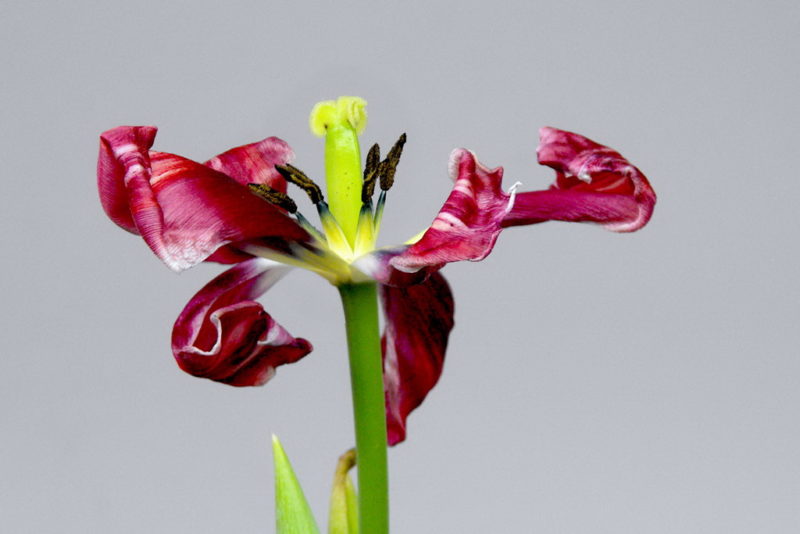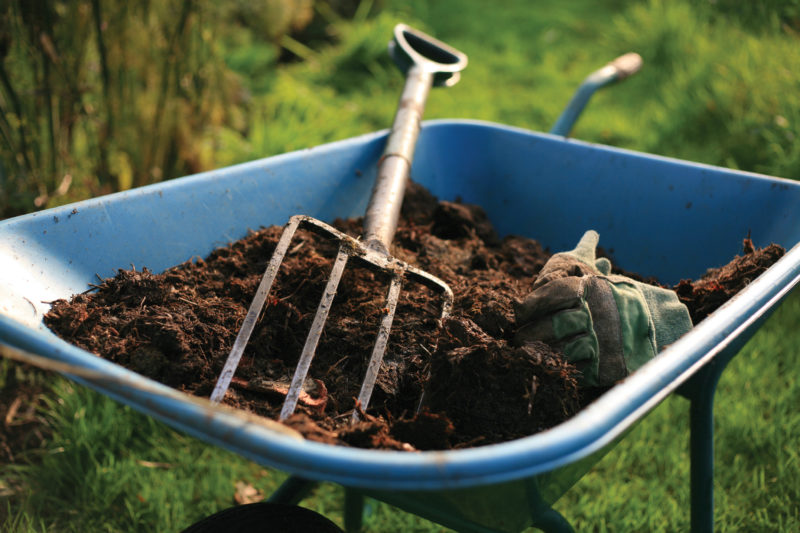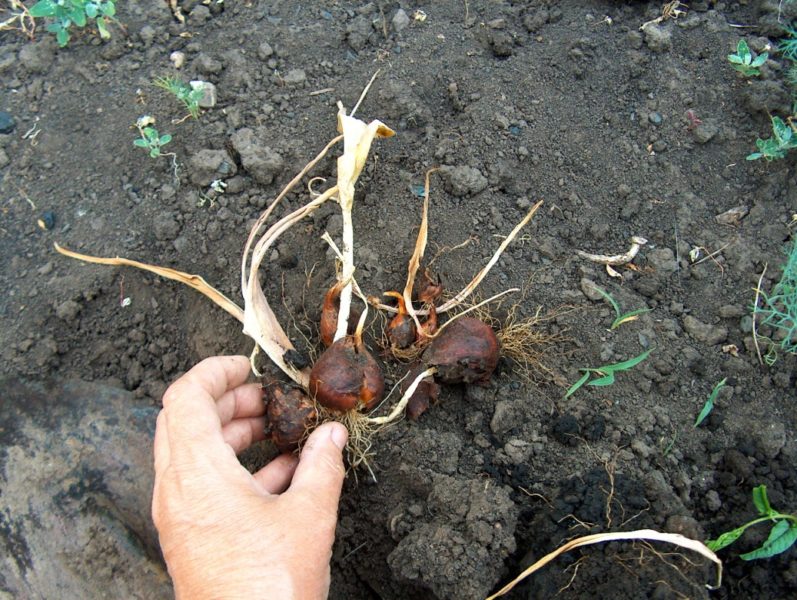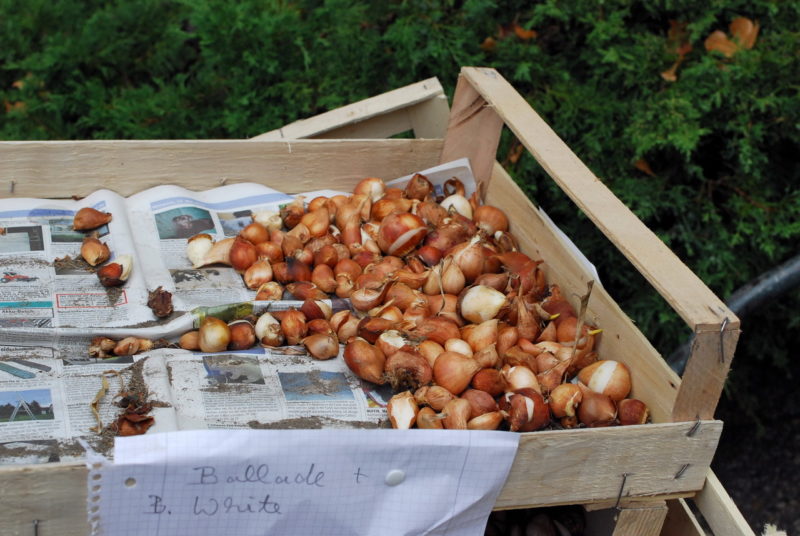Tulips have a bewitching beauty, capturing the eyes with a riot of colors. Unfortunately, their flowering period is very short. And now on the site there is a flower bed with wilted plants, tulips have bloomed what to do next, and how to store them until the next season you have to figure out.
Material Content:
Tulip care after flowering

In order to preserve the attractive appearance of the garden, tulips can be planted in separate containers that are easy to clean after flowering. The second option: place them between perennials with a long flowering period.
Leaf cutting
Take your time to prune the leaves, as nutrients and trace elements come through them. When removing still green foliage, the bulb stops its development.
As soon as the leaves turn yellow, they must be cut off, leaving a small lump. Set a small stick so as not to lose the bulbs before digging.
Does a wilted plant need to be fertilized?
After flowering, remove the peduncle and continue watering with fertilizing for 14-20 days. Bulbs will need this time to accumulate nutrients. Nitrogen and chlorine should not be present in the fertilizer, but phosphorus and potassium will help strengthen the plant.

Watering should be plentiful, not allowing drying in the ground. To do this, you need 500 ml of water under one root. Pay attention to the amount of fertilizer, 40 gr is enough per square meter. top dressing, otherwise the bulbs will form for too long.
Replanting tulips after flowering
A flower transplant is carried out to prevent plant degeneration, although this does not exclude all risks.Some varietal tulips can grow in one territory for up to 4 years, without requiring a transplant. However, they also need a change of location for optimal development.

There are certain rules for this, which you should adhere to:
- Before replanting tulips, it is necessary to wait until the flowering ends and cut off the withered leaves. It should take from 14 to 30 days, otherwise the bulbs will not have time to accumulate the necessary supply of nutrients for the next season.
- The plant should be transplanted into nutritious soil, on which previously crops suitable for further growing tulips grew. Wells are placed in increments of 30 cm between the bulbs, while the distance between the children should be at least 15 cm.
Before placing the tulip in the hole, a warm solution of potassium permanganate is poured into it. It happens that in a selected area the land is cracking, it is worth pre-mixing it with peat. If you neglect this advice, the flowers will hurt or die. - Bulbs without defects are used as planting material. When transplanting, watering is not required, since the soil was moistened in advance. The first watering is carried out after 4 days, and after two weeks you can start feeding flowers.
When to dig out tulips after flowering?
In June, gardeners have a question: when to dig out tulips after flowering? It is necessary to wait until the leaves turn completely yellow and the stems lose their hardness. Only in the presence of these indicators is it possible to dig plants.
How to dig a plant?
It is better to use a pitchfork to dig out, since a shovel can damage the plant. Dig the soil carefully so as not to leave the bulbs in the ground.

Drying tulips in the open sun is strictly prohibited. Pre-sort the kids from the adult bulbs and place in a warm place. After three days, the plants must be disposed of from the ground and rotted and diseased rhizomes removed, as well as large and small.
Large planting material is more productive, but the kids are also suitable for planting, only in a separate place.
Bulbs will need about 5 days to dry in the presence of dry weather, increased humidity increases the period to 14 days. All this time, the container with the plants should be in the shade without direct sunlight.
Bulb storage and handling
Care for tulips after flowering, as well as their further storage, must be carried out taking into account the temperature regime, humidity, ventilation and lack of light.

As containers, wicker baskets made of natural materials, wooden boxes, paper containers or nets are optimally suitable. Sorted roots are laid in a maximum of two layers. The buds and leaves will form over the next couple of months, so storage conditions must be carefully monitored.
Humidity
The optimum level of humidity is in the range of 60-70%. When the air is drier, the bulbs will start to wrinkle, so when these symptoms appear, moisten the air. High humidity will cause early germination and lead to rotting of the material.
Temperature mode
The first three weeks in the store should adhere to a temperature of 25 to 30 degrees. Further, this indicator should not exceed 20 ° C.
Quality ventilation
A prerequisite for successful preservation is the presence of a good ventilation system in the room. During storage, the use of high plastic containers and plastic bags is unacceptable. Such conditions will not allow preserving the bulbs until next season.
Some gardeners prefer to store bulbs in the refrigerator. However, this is not the best option. Low temperatures lead to late laying of the kidneys. Such a bulb will not bloom.
Pay special attention to children, as adult bulbs will degenerate over time, and new ones will be required for further reproduction.
Periodically review material and remove rotten plants. If there are rodents in the store, it is better to store the bulbs in nets by hanging them from the ceiling.
Following these simple recommendations, you can enjoy the beauty of tulips every spring, annually increasing the number of these beautiful flowers.












